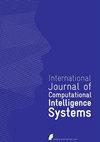GeoJSON文档中的软查询特性:GeoSoft建议
IF 2.9
4区 计算机科学
International Journal of Computational Intelligence Systems
Pub Date : 2023-10-14
DOI:10.1007/s44196-023-00325-3
引用次数: 0
摘要
自从$$\textit{JSON}$$ JSON作为一种交换大量数据的流行格式出现以来,出现了一种新的NoSQL数据库系统,称为$$\textit{JSON}$$ JSON文档存储,用于存储$$\textit{JSON}$$ JSON数据集;事实上,这些新型数据库能够本地管理$$\textit{JSON}$$ JSON文档的集合。为了帮助分析师和数据工程师查询和集成持续保存在$$\textit{JSON}$$ JSON文档存储中的$$\textit{JSON}$$ JSON数据集,已经开发了J-CO框架(在意大利贝加莫大学):它是围绕一种名为J-CO- ql $$^{+}$$ +的新颖查询语言构建的,该语言提供了复杂的功能,包括软查询功能。然而,J-CO-QL $$^{+}$$ +(作为查询$$\textit{JSON}$$ JSON数据集的其他语言)被设计为通用的;因此,用户在特定的数据格式上应用它可能会很麻烦。GeoJSON就是这种情况,它是一种特定且流行的$$\textit{JSON}$$ JSON数据格式,旨在表示地理信息层。本文介绍了GeoSoft的最新发展,这是一种新颖的高级“领域特定语言”,专门用于表达对GeoJSON文档的复杂查询,包括软查询。GeoSoft受到经典SQL语言的启发,从而减少潜在用户的学习曲线。GeoSoft查询被翻译成J-CO-QL $$^{+}$$ +脚本,以便实际执行。本文章由计算机程序翻译,如有差异,请以英文原文为准。
Soft Querying Features in GeoJSON Documents: The GeoSoft Proposal
Abstract Since the advent of $$\textit{JSON}$$ JSON as a popular format for exchanging large amounts of data, a novel category of NoSQL database systems, named $$\textit{JSON}$$ JSON document stores, has emerged for storing $$\textit{JSON}$$ JSON data sets; in fact, these novel databases are able to natively manage collections of $$\textit{JSON}$$ JSON documents. To help analysts and data engineers query and integrate $$\textit{JSON}$$ JSON data sets persistently saved in $$\textit{JSON}$$ JSON document stores, the J-CO Framework has been developed (at the University of Bergamo, Italy): it is built around a novel query language, named J-CO-QL $$^{+}$$ + , that provides sophisticated features, including soft-querying capabilities. However, J-CO-QL $$^{+}$$ + (as the other languages for querying $$\textit{JSON}$$ JSON data sets) is designed to be general purpose; consequently, it can be cumbersome for users to apply it on specific data formats. This is the case of GeoJSON , a specific and popular $$\textit{JSON}$$ JSON data format that is designed to represent geographical information layers. This paper presents the latest evolution of GeoSoft , a novel high-level “domain-specific language” that is specifically designed to express complex queries on the GeoJSON documents, including soft-queries. GeoSoft is inspired to the classical SQL language, so as to reduce the learning curve of potential users. GeoSoft queries are translated into J-CO-QL $$^{+}$$ + scripts, to be actually executed.
求助全文
通过发布文献求助,成功后即可免费获取论文全文。
去求助
来源期刊

International Journal of Computational Intelligence Systems
工程技术-计算机:跨学科应用
自引率
3.40%
发文量
94
期刊介绍:
The International Journal of Computational Intelligence Systems publishes original research on all aspects of applied computational intelligence, especially targeting papers demonstrating the use of techniques and methods originating from computational intelligence theory. The core theories of computational intelligence are fuzzy logic, neural networks, evolutionary computation and probabilistic reasoning. The journal publishes only articles related to the use of computational intelligence and broadly covers the following topics:
-Autonomous reasoning-
Bio-informatics-
Cloud computing-
Condition monitoring-
Data science-
Data mining-
Data visualization-
Decision support systems-
Fault diagnosis-
Intelligent information retrieval-
Human-machine interaction and interfaces-
Image processing-
Internet and networks-
Noise analysis-
Pattern recognition-
Prediction systems-
Power (nuclear) safety systems-
Process and system control-
Real-time systems-
Risk analysis and safety-related issues-
Robotics-
Signal and image processing-
IoT and smart environments-
Systems integration-
System control-
System modelling and optimization-
Telecommunications-
Time series prediction-
Warning systems-
Virtual reality-
Web intelligence-
Deep learning
 求助内容:
求助内容: 应助结果提醒方式:
应助结果提醒方式:


